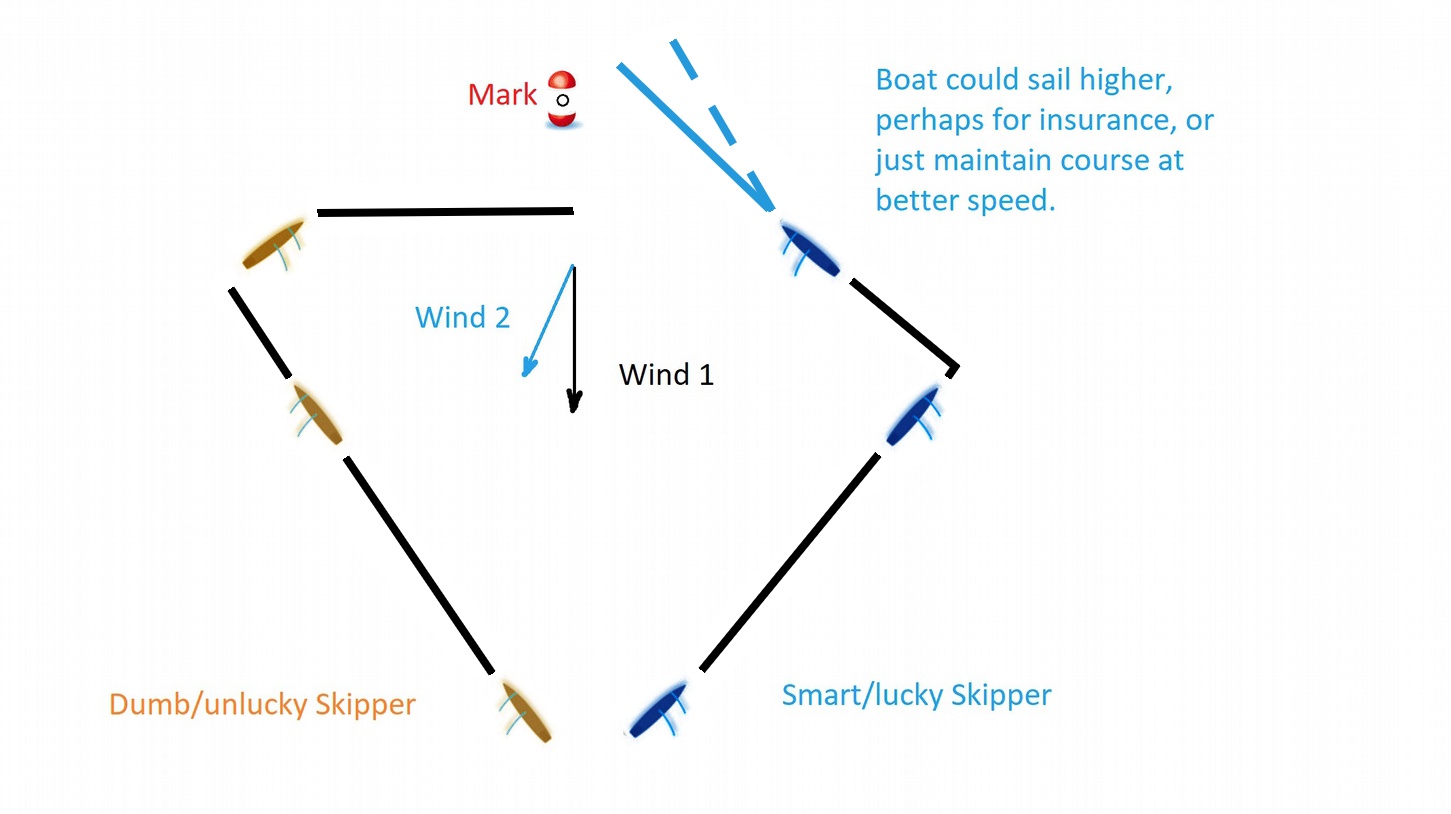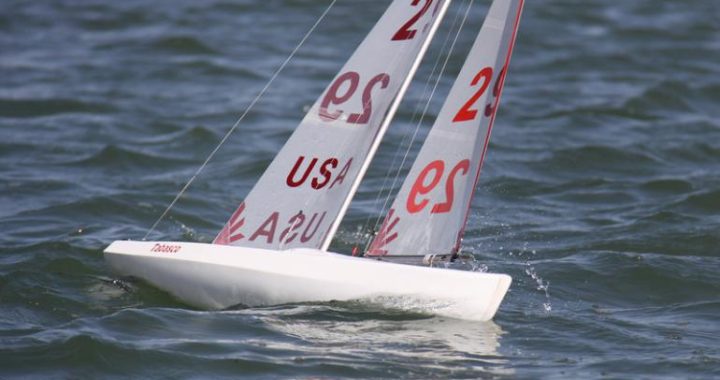Traditional Race Management
We sail our little boats on ponds and small lakes, sometimes on small parts of larger lakes, but seldom out in the wide-open, and our races generally last 10 minutes at most, rather than about an hour for big boats. That is, the recommendations for big boat racing often do not apply all that well to our racing, but it is useful to know what the big boat racers know. That's mstly what this particular Biggs' Bit is about.
Here are some general guidelines for racing big boats on upwind legs:
1)Favor the tack that takes you more directly to where you are trying to go. Consider tacking whenever that changes.
2)Favor the tack that takes you toward an expected wind shift (if the expected shift will then be favorable – which it will if we are talking about an upwind leg and direction shifts less than 90 degrees).
3)Favor the tack that takes you toward stronger wind.
4)Especially when nearing the mark, look to get to the starboard tack layline to avoid port-starboard right-of-way problems near the mark.
Wind tends to skip over or around a clump of boats, and all will go slower so long as they remain close together. One big boat can badly affect the wind of a nearby boat. Using this fact is an important part of big boat racing. (And I have never seen such an effect with rc boats, but I commonly see the wind skip over a clump of rc boats.)
Roughly speaking, a tack costs two boat lengths, so plan to minimize tacks. That said, if winds are likely to vary during the race, traveling up the middle of windward legs is worth considering, combined with tacking on each shift. At the expense of offering little chance for spectacular gains, an up-the-middle course minimizes the chances of getting hung out downwind of the mark after sailing to the former layline. (Layline – the line at 45 degrees to the wind that will take the boat just past the upwind mark. That is, 45 degrees, or whatever is the best pointing angle for the boat in question. For America's Cup boats prior to the multihulls, that was around 35 degrees!)

Figure 1: Predicting/guessing wind shifts
In Figure 1, the blue boat and the orange boat have made the same progress toward rounding the windward mark when the wind shifts clockwise, lifting the blue boat and heading the orange boat. As suddenly as the wind has shifted, blue is much closer in sailing time to the mark than orange. If the shift was only a matter of luck, then blue got lucky, but if the shift was predictable, then to the extent blue predicted the shift, blue is smart.
If it was a long race and the forecast said the wind would shift during the race, then orange should have known better. If the wind was shifting back and forth from two directions at somewhat predictable intervals, then orange should have known better. Otherwise it just pays to be lucky.
When shifty winds are largely unpredictable, and especially when frequent shifts are likely, try to sail such that you give luck a chance to help you out, while also trying to keep bad luck from hurting too bad. Especially when winds are shifty, if you get a chance to take some cheap insurance against a wind disaster, strongly consider taking the insurance.
Author: Mike Biggs
